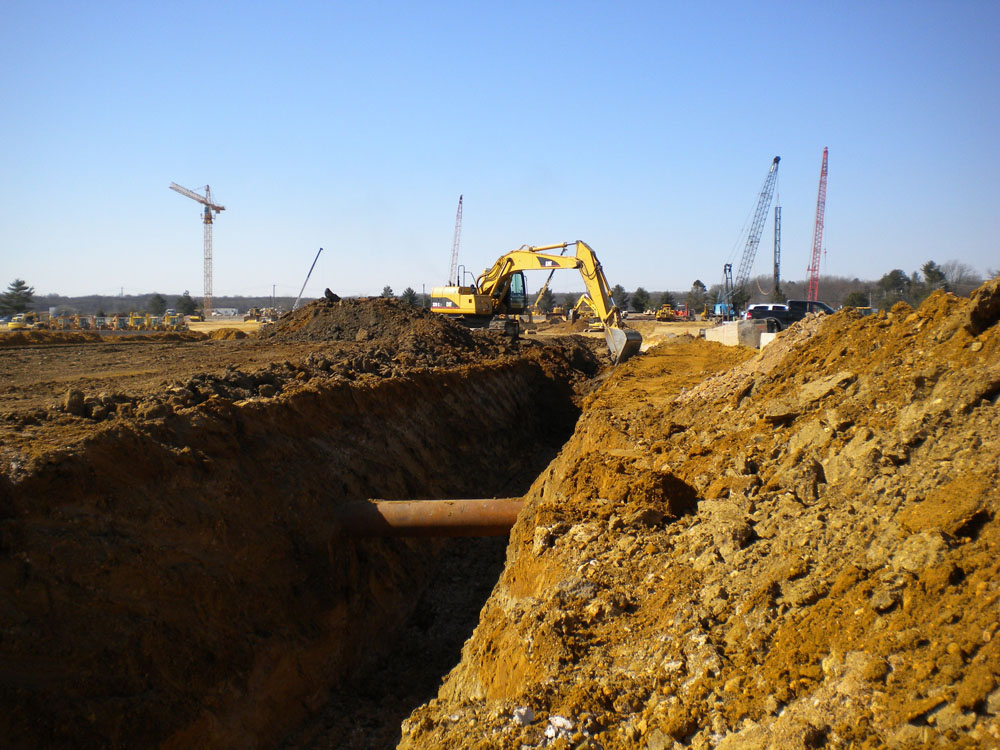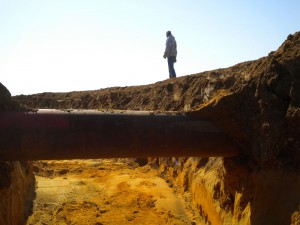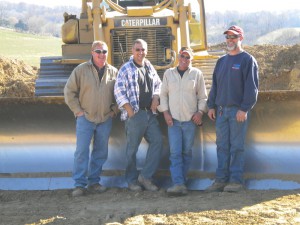June 2012 Vol. 239 No. 6
Features
How Pipeliners Are Made: A Win-Win With Union Training In Northeast

After a handful of years when unemployment prevented acceptance of new members, the Local 825 branch of the International Union of Operating Engineers has returned to a tradition of member training it has been practicing since the early ’60s – to an enthusiastic response.
Serving New Jersey and southern New York, the union has 6,800 members. More than 800 participated in the busy winter training season of 2011-2012, including about 90 who attended full nine-week courses in new skill sets. About half of those 90 are apprentices new to the union.
Paid for by a $1.25/hour fee from members’ paychecks, the programs are free to students. Training staff identify expert operators and areas where the demand for skills is high, and then borrows or buys equipment to give trainees hands-on experience.
“We try to take as much as we can and pour it back in to the students and the training and retraining. Our members can go down there as often as they like and learn anything that we have available,” said Al Zabicki, director of the Dayton, NJ training center.

They’re looking for “opportunity and the knowledge they need to work out there.” And they’ve come to the right place. “The training we put out this year was beyond compare.”
This winter, instructors created a full pipeline spread, and the trainees laid a 2,000-foot line start to finish.
“We try to simulate what we may find on the job, so people are prepared for what they’re going to face when they get out on the jobsite,” said Greg Lalevee, business manager for Local 825. Every aspect of pipeline construction is on the syllabus, from the proper methods for digging ditches and reading stakes, to tandem carries using two and three side booms to move 50-ton bridge beams, river crossings and winching up 2-to-1 slopes.
Some of the equipment belongs to the training center. But more state-of-the-art pieces are often borrowed from contractors.
“The pipeline companies have been great. The two based near here are Henkels & McCoy and Napp-Greco and they’ve both been very generous with their time and talent,” said Lalevee. “The local Caterpillar dealer has helped us – “we were able to get a more modern pipelayer last year, the hydraulic style.”

Hydraulic side booms are in particular demand as the center’s four side booms are all in the older style. In 2010-2011 a loan of John Henry drills from Henkels & McCoy allowed the center to train members who moved directly to jobs on the same drills after the class was completed. The center’s pipeline classes also offer training and certification on excavators and angle-blade dozers, and a mechanics’ class which covers welding as well as methods to get machines back on the right-of-way faster.
Henkels & McCoy loans its equipment because it’s to the company’s advantage: “Our lifeblood is the crafts that we deal with,” explained Edward J. Murphy, vice president and director for Henkels & McCoy. “When they leave that school these guys know how to operate that piece of equipment.”
Quality training is a crucial help to the contractor. Murphy said the company was happy to loan available equipment for training to many programs, but this center had a particular reputation for excellence. “I’ve been with Henkels for 47 years and I’ve been working with the operators [at Local 825’s training center] for close to 40 years. You couldn’t have a better facility to work with and a better quality of people to work with than out of 825. Their training center is as fine a one as I’ve ever seen.”
“We just try to stay ahead of the curve on where things are going and where things are trending so they can be the most competitive people in the industry, “ Lalevee said.
Equipment is changing fast, though, which can make it hard for Local 825 to keep up to date with its owned machines.
“We probably really started hitting [training] hard 20 years ago when there was talk of the Millennium Pipeline coming through our area of New York, and how rough the terrain was going to be, and how many operators it was going to take. The Millennium job has come and gone, but we were so successful building it that we just continued [the training program].”

The unpredictable economy has put some dents in the forward progress.
“When the economy first went completely into the tank we didn’t start any classes for [the winters of] 2008-2009, 2009-2010 and 2011, so for three years we didn’t take any [new applications] because we had such high unemployment,” Lalevee said. High training participation in the second half of 2011 he attributes in large part to journeyman operators upgrading a skill or getting new certification.
Trained workers, however, are in a better position, whatever the situation. “Our members have always been reluctant to travel, but in the down economy the last few years we’ve seen a good number of our people pick up and travel with the work. The contractors that do that kind of work don’t take non-productive people with them, so we must be doing something right,” Lalevee said.
While the Midcontinent shale plays don’t directly touch 825’s territory, the ripple effect is reaching them, and the impacts may very well increase.
Lalevee explained, “We’ve had a number of members who’ve worked in the northern half of Pennsylvania in Local 542’s area because of the shale work. Eventually the thought is that a lot of that is going to get piped through here, so we’re hoping that we see a future that’s got pipeline work as an integral part of it.
“We’re looking forward to them getting as much gas as they can out of that shale in Pennsylvania, even if they just pipe it through here.”
Aside from organized programs, this kind of comprehensive training can be hard to come by, especially in the deadline-driven environment of modern pipeline construction.
“I know what our guys go through trying to build up somebody as an operator. If you go down there on the first day and see people going through the motions of moving a side boom up and down…” Lalevee chuckled.
“Going back there seven weeks later you can see two side booms operated by the same people, running around the training center with a 50-ton bridge beam on their hook.”
Just as well, since real spread work doesn’t allow for fumbling beginners.
“You’re expected to hit the ground running – it’s not like you can go in and kind of feel your way around,” Zabicki said. “When I was started out, I could learn while out on a job because someone would take you under their wing. They still do and help their brother engineer out, but now you’re thrown into different situations. When you’re winching up a hill and there’s someone hanging on the end of a cable, you’re dependent on him knowing what he’s doing. ”





Comments